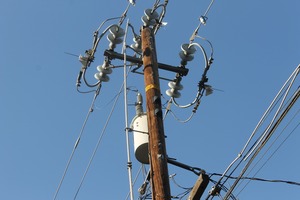Transformer Design for Smart Grids: Enabling the Grid of the Future
Corps
As the world transitions towards a more sustainable energy future, the role of smart grids has become increasingly critical. Central to the operation of these intelligent, efficient, and resilient power systems is advanced transformer design. These transformers are not merely the traditional components we’ve known for decades; they are sophisticated, digitally enhanced devices that enable the dynamic management of electrical grids. Let's explore how transformer design is revolutionizing smart grids and paving the way for the grid of the future.
The Role of Smart Grids
Smart grids represent the evolution of traditional power grids. They integrate modern technology to enhance the monitoring, analysis, control, and communication within the supply chain of electricity. This integration allows for real-time data processing, which helps in making more informed decisions, improving energy efficiency, and managing power distribution with precision.
Advanced Transformer Design: The Backbone of Smart Grids
Transformers in smart grids are designed to handle more complex and demanding requirements. Here’s how these advanced designs are contributing to the development and efficiency of smart grids:
1. Enhanced Monitoring and Control
Modern transformers are equipped with sensors and communication modules that provide real-time data on various parameters such as voltage, current, temperature, and oil levels. This data is crucial for predictive maintenance and avoiding failures, ensuring a reliable power supply.
2. Flexibility and Adaptability
Unlike traditional transformers, those designed for smart grids are highly adaptable. They can handle variable loads and integrate seamlessly with renewable energy sources like solar and wind, which are inherently intermittent. This flexibility is vital for managing the unpredictable nature of renewable energy and ensuring stable grid operation.
3. Improved Efficiency
Efficiency is a cornerstone of smart grid technology. Transformer design for smart grids focuses on reducing energy losses through advanced materials and innovative construction techniques. High-efficiency transformers contribute to lower operational costs and reduced environmental impact.
4. Integration with Renewable Energy
Renewable energy sources are becoming a significant part of the energy mix. Transformers in smart grids are designed to facilitate the integration of these sources, allowing for bidirectional energy flow and energy storage systems. This capability supports the decentralized generation and consumption model, which is a hallmark of modern energy infrastructure.
5. Enhanced Security
With the rise of cyber threats, transformer design now includes robust security features to protect the integrity of the grid. Advanced encryption and secure communication protocols ensure that the data flowing through the grid is protected from unauthorized access and cyber-attacks.
Case Studies: Transformative Impacts
Several pilot projects around the world highlight the transformative impacts of advanced transformer design in smart grids. For instance, in Europe, the Smart Grid Gotland project demonstrated how smart transformers could integrate large amounts of wind power into the grid while maintaining stability and reliability. In the United States, the Pacific Gas and Electric Company's Smart Grid Deployment project showed significant improvements in outage management and customer satisfaction through advanced transformer technology.
The Future of Transformer Design
Looking ahead, the evolution of transformer design for smart grids is set to continue. Innovations such as solid-state transformers, which offer even greater efficiency and control, are on the horizon. These devices will further enhance the capability of smart grids to manage diverse energy sources and dynamic loads efficiently.
In conclusion, transformer design is at the heart of the smart grid revolution. By enabling enhanced monitoring, control, flexibility, efficiency, and security, advanced transformers are pivotal in building the grid of the future. As we continue to innovate and improve these designs, we move closer to a sustainable, reliable, and intelligent energy infrastructure that meets the needs of the 21st century and beyond.









commentaires